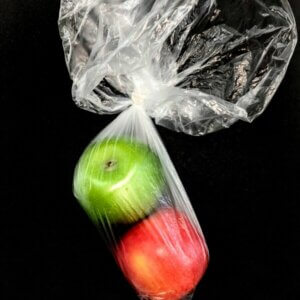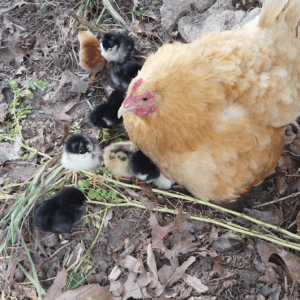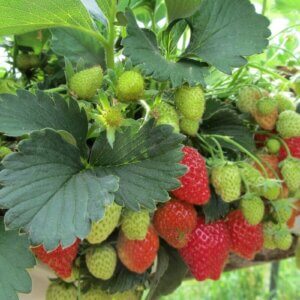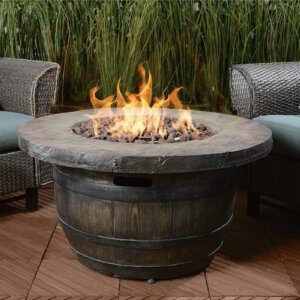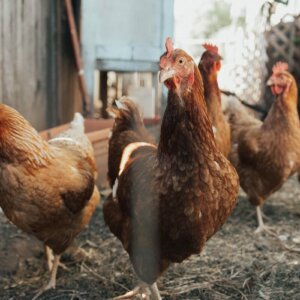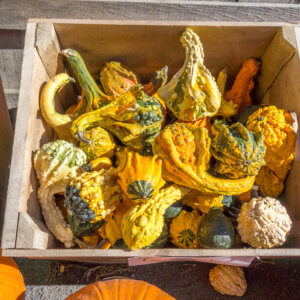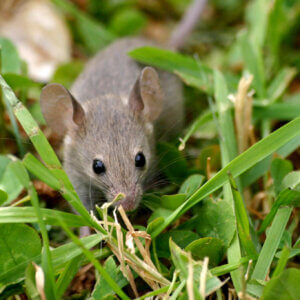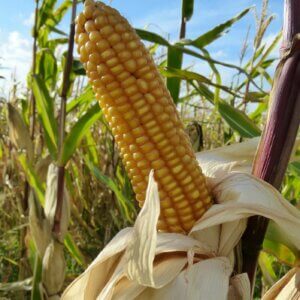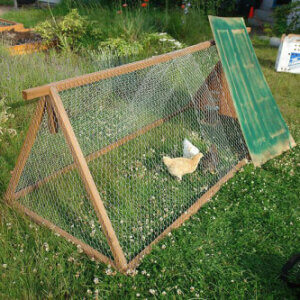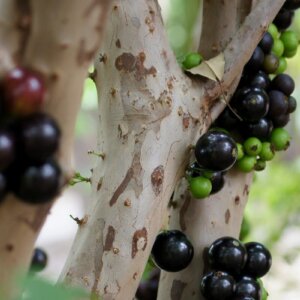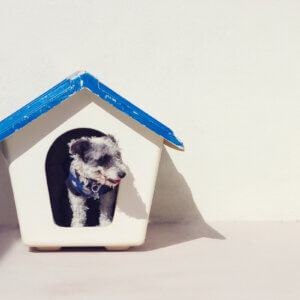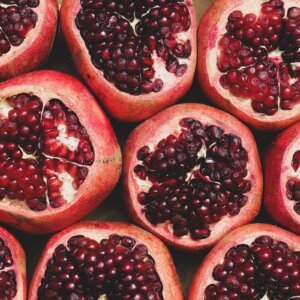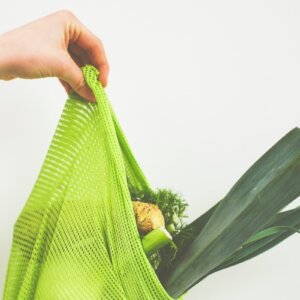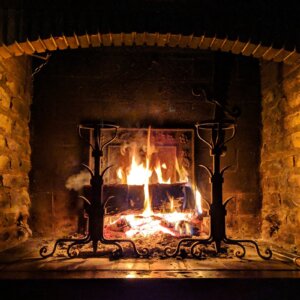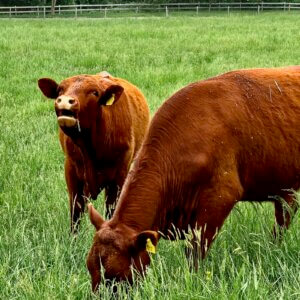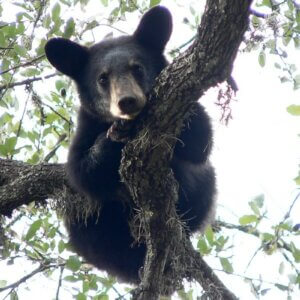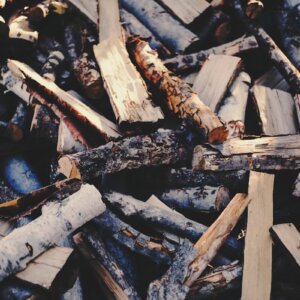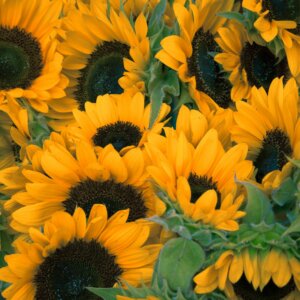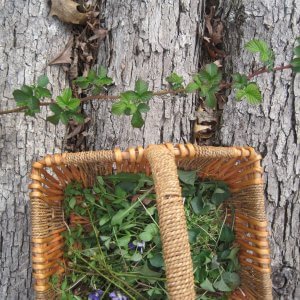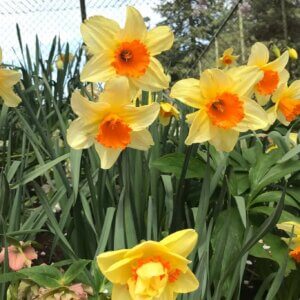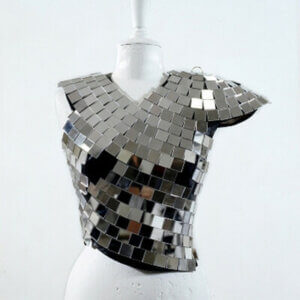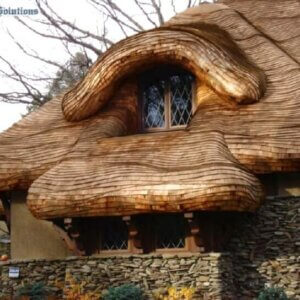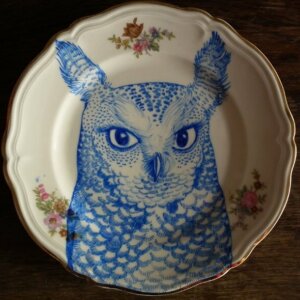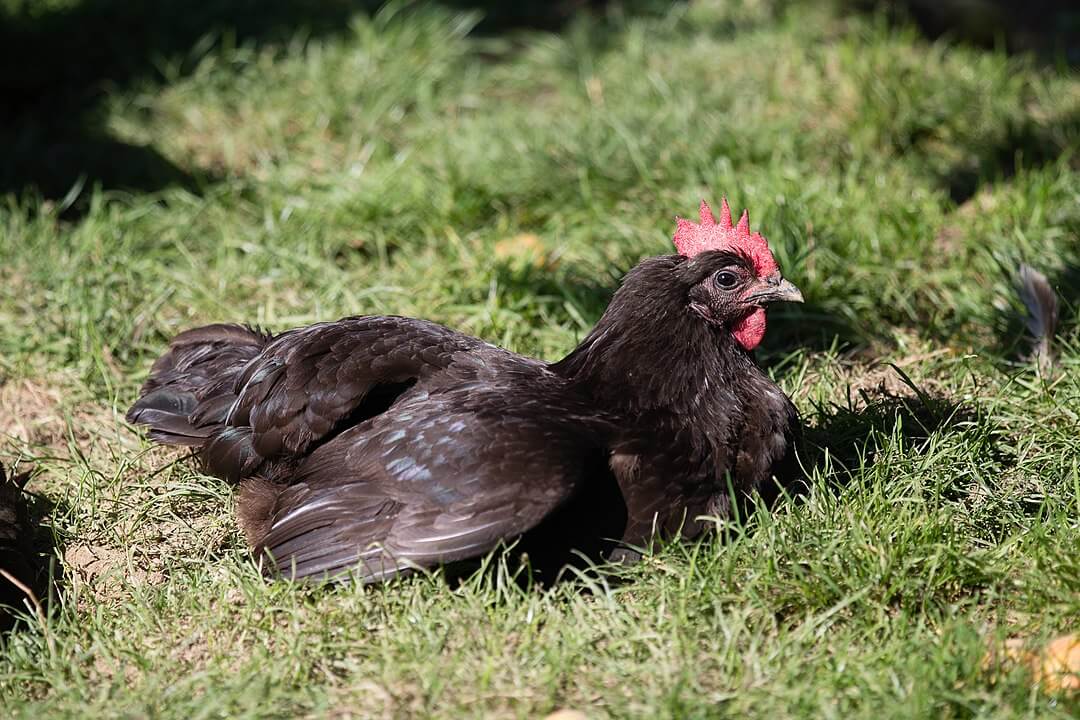
- Purpose: Layer
- Eggs: White Or Cream
- Egg Size: Large
- Color: Black With White Spots
- Comb Type: Large Single Comb Or Rose
The La Fleche appears totally diabolical with its unique comb and completely black feathering. With two round, parallel “horns” perched on top of its head, it’s no wonder that this rare French breed is nicknamed the “devil bird.”
Hardly evil, though, this old variety was thought to be extinct and is now enjoying a small surge in popularity as hobby farmers and breeders bring it back from the brink.
La Fleches are excellent fliers, and can clear a 6-foot fence with ease. Owners hoping to keep them contained may do well to either call them in with food in the evenings or just put up with them decorating their backyard’s trees.
Urban farmers may do best to keep them in confinement, which they tolerate well enough.
Somewhat appropriately, the La Fleche prefers warm climates and doesn’t do well in the cold.
Description
The La Fleche has excellent foraging instincts, and does well with an open area to free-range. With their flighty natures, they’ll have a better chance at watching for predators and maintaining their own safety than more docile, lazy breeds.
As with many active breeds, the La Fleche is flighty and standoffish, often wary of human contact. They do not want to be tamed, so someone looking for a cuddly pet chicken should take a cue from the La Fleche’s appearance and look elsewhere for love! The fluffy Cochin or gentle Jersey Giant would give you a far better return on your affection.
These birds produce a large amount of meat, and if you’re willing to wait the minimum of 10 months that it takes for them to reach market weight, you’ll be rewarded with a delectable roast! They are also appreciated for the small ratio of offal produced in comparison to the amount of meat they offer.
What’s The Yield?
Though it was originally intended as a dual-purpose bird, the La Fleche is renowned as an unparalleled eating experience. They produce a significant amount of meat in the breast specifically and have attractively white skin. The slow-maturing fowl are far heavier than they appear, with roosters easily reaching 8lbs and hens 6.5lbs.
As a layer, the hens produce quite large, white eggs, and often continue laying into late fall. The rarely-broody ladies can produce 150-180 eggs a year.
Their brush with extinction has also led to their modern use as a conservation bird. Those interested in the “slow food” movement have been turning their gaze to the La Fleche as a table bird, so breeders interested in having multiple avenues to their market may do well to introduce some of these horned birds into their flocks!
What Is The Real Point Of The Name?
The name of the bird is somewhat confusing. Translating to “the arrow” in French, it is often said that this refers to the arrow-shaped comb. The truth is, however, that it is named after the region in France close to where it was developed, like many chicken breeds.
Photos of La Fleche Chickens
Resources
- La Fleche, My Pet Chicken
- La Fleche, Oklahoma State University
- La Fleche Chicken, The Livestock Conservancy
- La Fleche Chickens, Poultry Keeper
- Chicken Breed Focus – La Flèche, BackYard Chickens
- La Fleche Chickens: The French Ornamental Breed, Raising Chickens
- La Fleche, Feathersite
- The La Fleche Chicken, Everything Poultry
- La Fleche Chickens, Hobby Farms
- Poultry Breed Facts La Fleche Chicken, Second Opinion Doctor
- History Of Breeds, University Of Illinois Extension Incubation & Embyology
- SPPA on La Fleche, Feathersite

